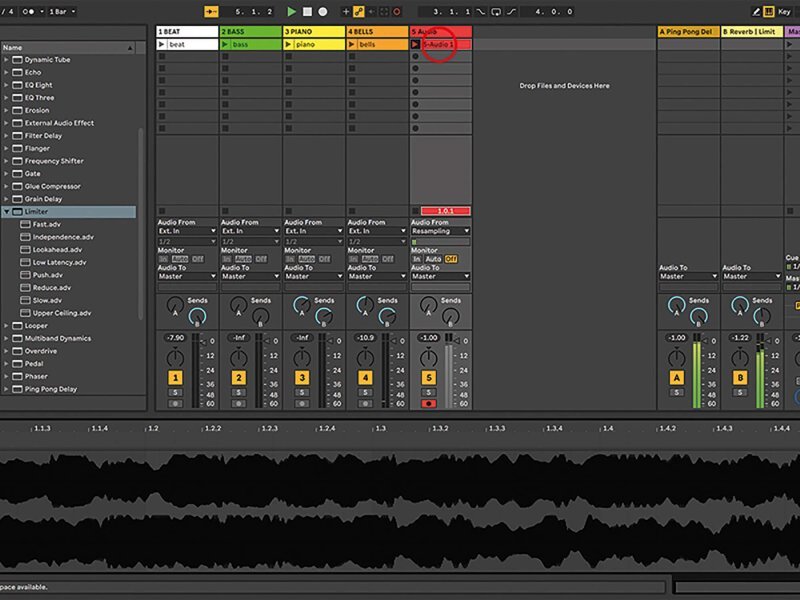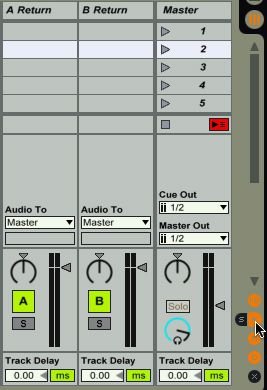Unleash Creativity: A Guide to Using Ableton Send and Return Effects
Introduction
Ableton Live is renowned for its powerful and flexible audio processing capabilities, and one of its standout features is the use of Send and Return effects. These effects allow you to apply audio processing to multiple tracks simultaneously, offering endless creative possibilities. In this blog post, we'll delve into what Send and Return effects are, how they work, and how to use them effectively in your Ableton Live productions.
Understanding Send and Return Effects
Send and Return effects, also known as auxiliary or bus effects, operate by sending a portion of an audio signal from one or more tracks to an auxiliary track (the "Return" track). The audio is then processed on the Return track, and the processed sound is blended back with the original audio from the source track(s). This setup allows you to apply the same effect to multiple tracks without duplicating plugins, saving CPU power and streamlining your workflow.
Advantages of Send and Return Effects
Consistency: When you apply the same effect across multiple tracks, you ensure a cohesive and consistent sound throughout your mix.
Resource Efficiency: By sharing effects among tracks, you optimize your CPU usage, especially when using resource-intensive plugins.
Creative Control: Send and Return effects give you greater control over the processing of multiple tracks and enable you to experiment with creative sound design.
How to Use Send and Return Effects in Ableton Live
Let's walk through the steps to set up and use Send and Return effects in Ableton Live:
1. Create a Return Track:
In the Live Session View, create a new Return track by right-clicking in the track area and selecting "Insert Return Track."
2. Insert an Effect on the Return Track:
On the Return track, insert the effect(s) you want to apply to your audio sources. This could be reverb, delay, chorus, or any other effect you desire.
3. Set the Send Amount:
On the source tracks (the tracks you want to process), locate the "Sends" section in the mixer. You'll find it on the right side of each track.
Click on the "Send" knob and turn it up to send a portion of the audio to the Return track. The higher the Send level, the more of the audio signal is sent to the Return track.
4. Adjust the Return Track Effect:
On the Return track, fine-tune the effect settings to achieve the desired sound. You can experiment with parameters like wet/dry mix, decay time, feedback, and more.
5. Blend the Processed Sound:
On the source tracks, use the Send level to control how much of the processed sound you want to blend with the original audio. This allows you to find the perfect balance.
6. Grouping for Further Control:
To simplify your workflow, consider grouping the source tracks and applying Send and Return effects to the group track. This can make it easier to manage multiple tracks sharing the same effects.
7. Automate Send Levels:
Get creative by automating the Send levels over time. This can add dynamic movement and depth to your mix.
Creative Applications of Send and Return Effects
Here are some creative ways to use Send and Return effects in your Ableton Live projects:
Creating Ambiance: Use reverb and delay Send and Return effects to add depth and space to vocals, synths, or percussion.
Parallel Processing: Apply compression, distortion, or saturation to a group of tracks via Send and Return effects to add character and intensity.
Special Effects: Experiment with creative effects like filters, phasers, or granular processing to achieve unique and experimental sounds.
Drum Bus Processing: Process all your drums (kick, snare, hi-hats, etc.) together through a bus with effects like saturation or transient shaping for a cohesive drum sound.
Conclusion
Ableton Live's Send and Return effects are a powerful tool for music producers looking to add depth, creativity, and efficiency to their productions. Whether you're seeking to create lush soundscapes, achieve parallel processing, or explore experimental sound design, Send and Return effects can unlock a world of possibilities in your music production journey. So, don't hesitate to experiment, tweak, and discover new sonic landscapes with this versatile feature in Ableton Live.


